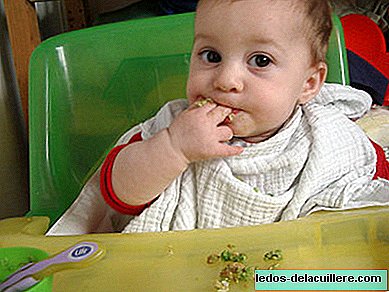
The Global Strategy for Infant and Young Child Feeding was jointly prepared by WHO and UNICEF to rekindle the world's attention to the impact of feeding practices on the state of nutrition, growth and development. , health, and even in the survival of infants and young children.
One of its sections stops at the characteristics that the complementary feeding offered to babies must have after six months. We know that it is from that age when the introduction of new foods is recommended, but not any food or prepared in any way is suitable for babies.
These days we take a tour of the different components of complementary feeding, their characteristics, ages indicated for their introduction and ways of preparation, about what we will deepen in the coming weeks.
But the basis that we cannot forget is the suitability of these foods. Infants are particularly vulnerable during the transition period in which complementary feeding begins.
According to WHO and UNICEF in the document indicated above, New foods that are introduced into the baby's diet as a complement to breastfeeding must meet these requirements To make sure they meet your nutritional needs:
* They must be timely, that is, they must be introduced when the energy and nutrient needs exceed what can be provided through exclusive and frequent breastfeeding. * They must be adequate, that is, they must provide sufficient energy, protein and micronutrients to meet the nutritional needs of a growing child. * They must be harmless, that is, they must be prepared and stored in a hygienic manner and must be given with clean hands and using clean utensils, and not bottles and teats. * They must be given properly, that is, they should be given according to the child's appetite and satiety signals, and the frequency of meals and the method of feeding (actively encouraging the child to, even when sick, consume enough food using your fingers, a spoon or feeding yourself) should be appropriate for your age.
These recommendations are intended to protect, promote and support the proper feeding of infants and young children.
The Global Strategy for infant and young child feeding focuses on the importance of ensuring that children develop their full potential, free from the adverse consequences of a state of poor nutrition and preventable diseases.
A first step, after breastfeeding, is to make sure that complementary feeding of babies meets the appropriate nutritional requirements, in its characteristics and in its form of preparation and offer to the baby.












